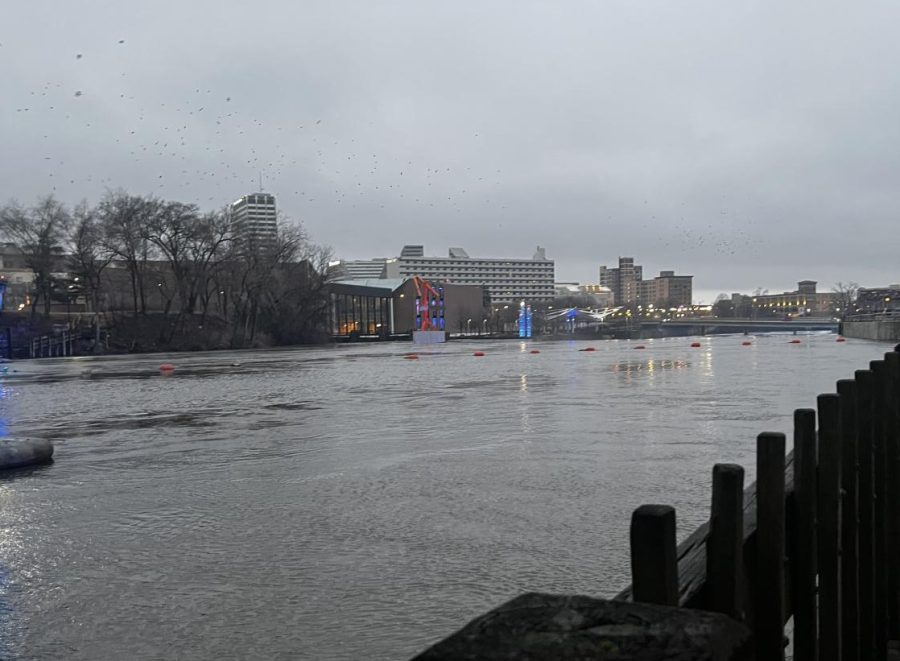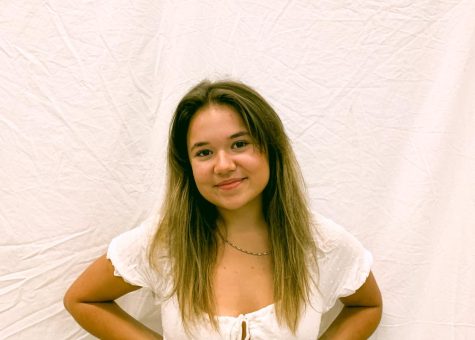Notre Dame Students Tackle the South Bend Disconnect
March 24, 2023
The disconnect between Notre Dame and the surrounding community has become increasingly present in my life.
South Bend is often a place we all take for granted. Its winding river and snow-blanketed ground can become repetitive and tiring. But it wasn’t until I started spending time on campus that I truly began to realize the beauty and unknown history behind South Bend.
I have had many jobs that have connected me with the community. I worked as a tour guide at the Oliver Mansion and South Bend History Museum where I mostly met elderly people or car fanatics who were eager to see the Studebaker Museum. I also worked as a lifeguard at Potawatomi Pool, Kennedy Pool, and the East Race where I served many members of the community who were often not able to afford the luxuries of gated country club swims. Because of this, I began to admire even the dingiest spots in my places of work.
However, when I began my work as a lifeguard at Notre Dame, my love for South Bend increased exponentially. I found myself often defending the town I called home, but that others called “the middle of nowhere”.
I often asked them if they had visited the downtown library, or taken a peaceful stroll by the river, to which they seemed unimpressed. I really wanted to tell them the findings of investigations I had completed for my classes: unveiling the unknown history of South Bend on the Underground Railroad, and proving the efficiency of a policy that combated water pollution in 2011 (way before it was cool).
My frustrations seemed unrecognized by most. Even South Bend’s own citizens rarely seemed to question the coexistence of a wealthy, private university, with 12,000 students, and a poor, poverty-ridden city containing over 100,000 people. However, I found a few people within the Notre Dame community who shared my concerns: Ava Cullinan, junior at Notre Dame and founder of the Instagram page “OutsideND”, and Aidan Creeron, senior at Notre Dame, and active community member.
Cullinan created OutsideND after joining a run club, “Fleet Feet Mishawaka”. During her runs, she passed by exciting restaurants and stores.,
“It quickly became apparent that there were a lot of things in South Bend that I didn’t know about, and it became a routine of mine to check out a new place or two after my weekend runs,” she said.
After sharing her experiences with her classmates, she noticed that many of them didn’t understand why she was interacting with the local community.,
“I started OutsideND because I wanted to change the negative stigmatization of South Bend that is widely accepted on campus,” Cullinan said.
“I thought that showing interesting parts of South Bend to Notre Dame students through an Instagram account would help my peers discover that South Bend has a lot of amazing things to do and places to check out.”
Cullinan also commented on the evolution of the Instagram page.
“For a while, OutsideND was just showing South Bend, but over the last couple of months, it has morphed into building connections across the two communities.”
She then offered a potential solution to the Notre Dame-South Bend disconnect.
“Last November, OutsideND with Heat Check Studios hosted an art show with an after-party featuring both South Bend and Notre Dame artists at LangLab.” Considering the event attracted 150 people, she believes that more events similar to this could help to eliminate the barrier between Notre Dame students and the local community.
When asked where she would take a Notre Dame student for an introductory tour of South Bend, she gave a detailed itinerary.
“Breakfast and coffee at Dainty Maid or the Early Bird, a tour of Howard Park area and stop at Erasmus Books, Tacos at Rosales Market, meet the artists at Vested Interests, tours at the Civil Rights Heritage Center and Studebaker Museum, sunset at the parking garage at Main and Colfax, and then dinner at Roslily.”
Notre Dame senior Aidan Creeron also shared his perspective on the rift between South Bend and Notre Dame.
“While I think some student groups do a good job at publicizing the different activities South Bend has, I think most students simply don’t hear about the great places to visit or fun things to do in the community,” he said.
Creeron also shared some fond memories of his time spent in the community.
“Besides spending time around Howard Park and going to local coffee shops, I really enjoyed when Notre Dame’s Center for Social Concerns put on an event for incoming freshmen to experience the South Bend community—we went all over town in just a few days, and I really enjoyed showing younger students all the different things to do in South Bend,” he said.
Creeron concluded that a lack of integration may be because many students think it is difficult to get to and from the city.
“I really wish more people knew that South Bend’s buses are free to all Notre Dame students. I think a lack of transportation prevents students from going into South Bend, but with the buses, getting to and from campus is very easy.”



